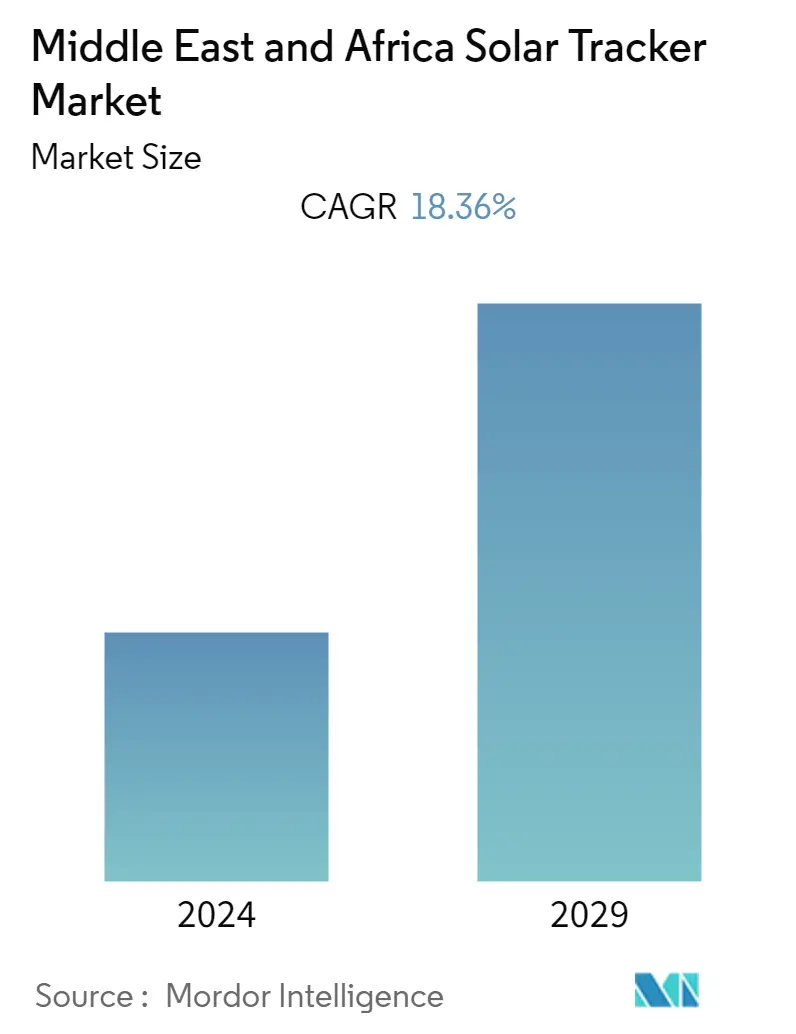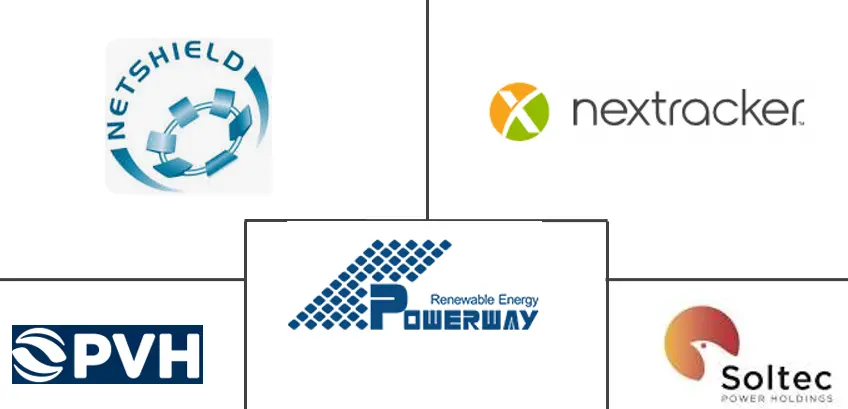
| Study Period | 2020 - 2029 |
| Base Year For Estimation | 2023 |
| Forecast Data Period | 2024 - 2029 |
| Historical Data Period | 2020 - 2022 |
| CAGR | 18.36 % |
| Market Concentration | Medium |
Major Players*Disclaimer: Major Players sorted in no particular order |
MEA Solar Tracker Market Analysis
The Middle East and African solar tracker market is expected to register a CAGR of 18.36% during the forecast period.
The COVID-19 pandemic did not have any major effect on the solar tracker market in the region. Presently, the market has reached pre-pandemic levels.
- Over the long term, the solar tracker market in the Middle East and African region is expected to have remarkable progress due to the availability of highly sun-drenched regions for solar projects, low labor costs, and availability of cheap and sunny desert land for utility-scale solar projects.
- On the other hand, the aggressive competition from other renewable energy sources, like hydrogen and wind, is expected to challenge the market's growth in the near future.
- Nevertheless, as solar trackers increase the solar power generating capacity of solar panels, they are recommended for utility-scale solar power projects. Thus, the growing focus of the region on utility-scale solar projects results in ample opportunities for the market.
- The market in Saudi Arabia is expected to grow at a faster rate due to the government's efforts to expand the solar power share and the interest from private investors.
MEA Solar Tracker Industry Segmentation
Solar trackers are devices that position solar panels at an angle relative to the sun in such a way that more sunlight strikes the solar panels. Thus, more energy can be absorbed and converted into electrical power. These devices are generally used for utility-scale solar projects. The Middle East and African solar tracker market is segmented by axis type and geography. By axis type, the market is segmented into single axis and dual axis. By geography, the market is divided into the United Arab Emirates, Saudi Arabia, South Africa, and the Rest of Middle East and Africa. For each segment, the market sizing and forecasts have been done based on value (USD billion).
| Single Axis |
| Dual Axis |
| United Arab Emirates |
| Saudi Arabia |
| South Africa |
| Rest of Middle East and Africa |
Middle East and Africa Solar Tracker Market Size Summary
The Middle East and Africa solar tracker market is poised for significant growth, driven by the region's abundant sunlight, low labor costs, and availability of expansive desert land suitable for utility-scale solar projects. The market has rebounded to pre-pandemic levels, with solar trackers playing a crucial role in enhancing the power generation capacity of solar panels. Despite facing competition from other renewable energy sources like hydrogen and wind, the focus on utility-scale solar projects presents substantial opportunities for market expansion. Saudi Arabia, in particular, is expected to experience rapid growth due to government initiatives and private sector interest in increasing solar power capacity.
The adoption of single-axis trackers, which can boost power production significantly, is gaining traction in the region. The decline in solar PV costs and advancements in concentrated solar power (CSP) generation have further propelled the solar energy sector in the Middle East and Africa. Countries such as the UAE, Saudi Arabia, and South Africa are leading in the proliferation of utility-scale projects. Notable developments, like the commissioning of a solar power plant in South Africa and the establishment of a solar tracker factory in Saudi Arabia, underscore the region's commitment to expanding its solar infrastructure. The market is moderately fragmented, with key players like NexTracker Inc., PV Hardware, and Soltec Power Holding SA actively contributing to the sector's growth.
Middle East and Africa Solar Tracker Market Size - Table of Contents
1. MARKET SEGMENTATION
-
1.1 By Axis Type
- 1.1.1 Single Axis
- 1.1.2 Dual Axis
-
1.2 By Geography
- 1.2.1 United Arab Emirates
- 1.2.2 Saudi Arabia
- 1.2.3 South Africa
- 1.2.4 Rest of Middle East and Africa
MEA Solar Tracker Market Research FAQs
What is the current Middle East and Africa Solar Tracker Market size?
The Middle East and Africa Solar Tracker Market is projected to register a CAGR of 18.36% during the forecast period (2025-2030)
Who are the key players in Middle East and Africa Solar Tracker Market?
NexTracker Inc., PV Hardware, Soltec Power Holding SA, NetShield South Africa and PowerWay Renewable Energy Co Ltd. are the major companies operating in the Middle East and Africa Solar Tracker Market.



